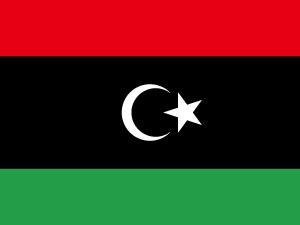
Libya
The DDoS threat landscape is constantly evolving, and to stay ahead of adversaries, ongoing monitoring and analysis are essential to detect how they are modifying their behavior and targets. NETSCOUT monitors the global threat landscape and drills into regional and country-level statistics to ensure that adversaries inform us of near-real-time trends. The country-level analytics featured on this page are automatically generated using our global threat analysis and collection platform, ATLAS, and provide a range of benchmarks for the specified time period, such as the top vectors used in DDoS attacks, top targeted industries, largest attack by bandwidth and throughput, most vectors used in an attack, and total attack frequency.
Max Multivector Attack
Max number of vectors seen in a single attack
20
Attack Vectors Used
1. ARMS Amplification
2. CLDAP Amplification
3. COAP Amplification
4. DNS
5. DNS Amplification
6. NetBIOS Amplification
7. RIPv1 Amplification
8. SNMP Amplification
9. SSDP Amplification
10. STUN Amplification
11. TCP ACK
12. TCP RST
13. TCP SYN
14. TCP SYN/ACK Amplification
15. UDP
16. WS-DD Amplification
17. mDNS Amplification
18. rpcbind Amplification
Top Attack Vectors
Dn
DNS Amp
Number of Attacks
1,797
Im
ICMP
Number of Attacks
1,038
Ch
Chargen Amp
Number of Attacks
774
Ta
TCP ACK
Number of Attacks
662
Np
NTP Amp
Number of Attacks
661
Top Four Vertical Industries Under Attack
The following industry chart shows the most targeted sectors in 2H 2023 by number of attacks.
| Rank | Vertical | Frequency | Max Attack | Max Impact | Average Duration |
|---|---|---|---|---|---|
| 1 |
|
75 | 38.1 Gbps | 4.01 Mpps | 37 Minutes |
| 2 |
|
41 | 0 Gbps | 0 Mpps | 8 Minutes |
| 3 |
|
38 | 38.96 Gbps | 4.47 Mpps | 7 Minutes |
| 4 |
|
2 | 0.09 Gbps | 0.14 Mpps | 6 Minutes |